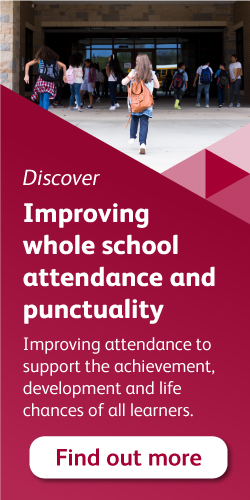
I have begun tracking Ofsted reports: ‘What does the school need to do to improve?’ I’ve identified 3,858 specific areas from inspections since January 2024.
Tracking Ofsted ‘Needs’ Judgments
As part of my work for SSAT, I have begun tracking Ofsted reports published for education settings since the start of 2024. My focus has been on summarising the judgments made by inspection teams in the section titled ‘What does the school need to do to improve?’
So far, up to 7th May 2024, I have identified 3,858 specific areas of need for improvement identified across every one of the inspection reports published this calendar year. I have broken these down into the different strands of the inspection framework: quality of education; behaviour and attitudes; personal development; leadership and management. Within these framework areas, I have captured the ‘needs’ comments written by inspection teams thematically.
Quality of Education Domination
Perhaps unsurprisingly, given the focus of the framework as a whole, ‘needs’ statements written by inspection teams are dominated by the curriculum as planned and enacted. Not counting schools deemed to be ‘outstanding’ – those with no identified needs – over three-quarters of the ‘needs’ comments (77%) are about quality of education. Of these, the largest proportion of comments are about the following:
- Assessment – 13.9%
- Curriculum implementation – 11.4%
- Curriculum planning – 9.2%
- Content, knowledge, sequencing – 8.3%
- Phonics and/or reading – 7.7%
- Support for SEND – 5%
Attendance and Punctuality ‘Needs’
The behaviour and attitudes section of the framework represents only 9% of the total ‘needs’ comments from reports published so far this year, second only to the quality of education. Importantly, though, over half of the comments on behaviour and attitudes (187 of 361) are about attendance and punctuality. In fact, attendance and punctuality concerns are the next highest proportion after those mentioned on the list above: they represent 4.9% of all of the ‘needs’ identified in reports since 2nd January.
Although attendance and punctuality is the 7th highest of these themed ‘needs’ for schools, its importance changes for different sectors. In pupil referral unit inspections, attendance and punctuality is the second highest concern raised by inspection teams. In secondaries, it is the third highest ‘need’. In primaries, attendance/punctuality is the 10th most common area for improvement, although it forms a bigger proportion of the behaviour and attitudes ‘needs’ than for secondaries. In special schools the 7th most common ‘need’ identified.
Apart from secondaries and pupil referral units, what other features are there of schools who need to pay close attention to attendance and punctuality?
- Schools rated ‘inadequate’ had attendance/punctuality referenced in 10.5% of the time.
- For ‘requires improvement’ judgments, it featured only 6.5% of the time.
- The figure was even lower for ‘good’ schools, featuring 6.1% of the time.
- Attendance and punctuality concerns featured in 8.8% of reports for schools with an ‘outstanding’ grade that received ‘needs’ comments (i.e. ungraded but at-risk reports).
Improving and Declining School ‘Needs’
The data is very interesting when looking at schools’ latest inspection outcome in comparison to its previous one. Attendance and punctuality comments appeared on most frequently (7.1%) in comments where schools had improved their grading, and this figure increases with schools improving to ‘good’ (7.6%) rather than those improving to ‘requires improvement’ (4.8%). The message appears to be that improving schools seeking an ‘outstanding’ judgment need to take attendance and punctuality very seriously, especially in the secondary sector.
By contrast, inspection teams seem to see declining schools as having bigger fish to fry. Only 3.5% of these schools received ‘needs’ comments about attendance and punctuality (half that of improving schools). Schools whose grading is moved down from ‘outstanding’ to ‘good’ get mentions of attendance and punctuality only 1.8% of the time. Remembering that ‘at-risk-but-still-outstanding schools had attendance and punctuality mentioned 8.8% of the time seems therefore counter-intuitive. I guess that the conclusion is that absence and lateness may be risks of no longer being ‘outstanding’, but it is the implementation and impact of the curriculum that is delivered that will tip the scales in the end. The two are clearly not unrelated.
Statutory Attendance Guidance and Inspections
Attendance and punctuality ‘needs’ statements appear to have changed significantly over the course of the year. Firstly, they have increased significantly in frequency from November to March. They featured in 2% of the inspection comments from November (not a full sample, as these were only from reports published from January onwards). The proportion rose to 4% for December, 5% in January and February, and 7% for the March reports published so far. In secondary schools, attendance and punctuality comments have almost doubled from 7% of all ‘needs’ statements in November to 13% in the March inspection reports published so far. In primaries, they have quadrupled in frequency from 1% to 4% over the same period.
What is also notable from a handful of reports from recent inspections is that the inspectorate has begun to refer more specifically to areas within the soon-so-be-statutory guidance:
- The use of incorrect absence coding.
- The over-use of part-time timetables.
- Poor attendance of disadvantaged students and their inability to access the curriculum.
- Absence resulting from suspensions and exclusions of this group.
These specifics aside, the vast majority of the ‘needs’ statements made in inspection reports, are not particularly incisive for the readers of the report (hopefully they will be more helpful for the schools themselves). It is notable, for instance, that a great number of the 187 reports with attendance and punctuality identified as concerns also state that the school is working hard in this area. In fact, many of the comments stress that the school needs to continue their good work – and even “redouble their efforts” – rather than do anything differently.
Attendance and Inspection: Your Best Bets
So, where does a school go if it needs to change things without having the specific ‘needs’ identified. Once place would be to attend our upcoming webinar on “what schools can learn from recent research into attendance”. The webinar will outline our summary of reports published since the start of the pandemic and our synthesis of the ‘best bets’ for improving attendance and punctuality based upon this research.
In this webinar, we will explore:
- School culture
- Data processes
- Family engagement
- Impactful intervention
- Effective evaluation
The webinar is on Thursday 26 September at 16:00 to 17:30
Dr Keven Bartle, Senior Education Lead, SSAT

Keven has been a teacher for almost three decades and was headteacher at a richly diverse secondary school in London for nine years. Through his career, Keven has been committed to the power of education for social justice and transformation, working in schools where staff make a difference to the lives of children, families and communities.

